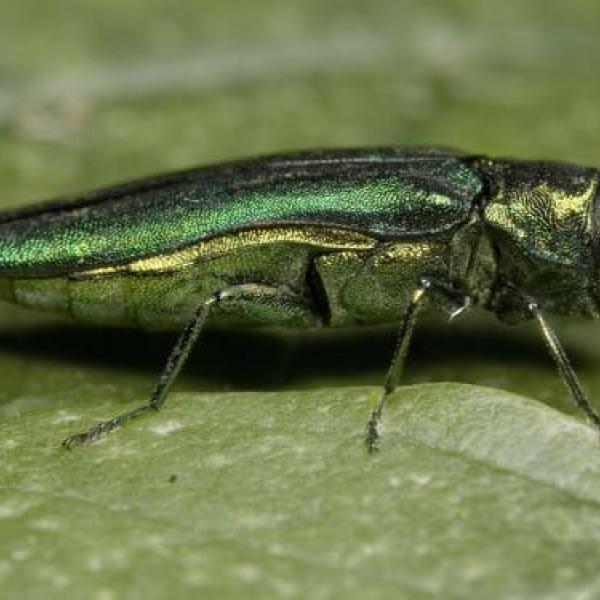
News Source
Infection is hard to detect at first. It takes up to three years for the serious symptoms to show, but when they do, it doesn’t take long.
Ash trees became common in Vermont after Dutch elm disease decimated elm populations across the state, starting in the 1960s or so.
Now, ash trees are at risk.
The problem is the emerald ash borer, an insect native to eastern Asia; it burrows into trees as a larva.
The bug, which causes a 100 percent mortality rate in ash trees, has been spotted in all states and provinces surrounding Vermont.
It’s only a matter of time before they make an appearance in Vermont, too, said Meredith Whitney, a forest pest outreach coordinator with the University of Vermont Extension.
“It could be possible that they’re here already,” Whitney said. “We just haven’t detected them.”
That’s why the Waterbury tree committee is pairing with the extension service to host an invasives workshop Thursday, May 26, at 7 p.m. at the municipal building at 28 N. Main St.
“When you’re dealing with a pest, it’s easy to do something with one tree,” said Chuck Kletecka, a member of the tree committee, “but you can’t spray a whole forest.”
The workshop will help people to spot the early signs of infection.
It will also give people tips on how to slow the insect’s spread, such as not bringing firewood from other places into the state.
Whitney said there are a few signs that an ash tree is infected. The earliest, which are often difficult to spot, are the D-shaped exit holes left by the larval stage.
Later symptoms include splitting of the bark, die-back of the crown and woodpecker damage.
Whitney said if people see any of those symptoms, they should call the state Department of Forests, Parks and Recreation, even if they’re not sure.
Whitney will bring samples of the bugs to the workshop, along with infected wood for people to see.
Though this workshop will focus on the emerald ash borer, that’s not the only insect that could put Vermont’s trees at risk, Kletecka said.
One other example is the Asian longhorn beetle. It spreads slowly, but it affects a wider variety of trees, including the sugar maple — which is especially important for the state.
He said it’s good for people to be knowledgeable and active to stop these bugs from spreading to Vermont’s forests.
Article by Stanley Blow III, Waterbury Record